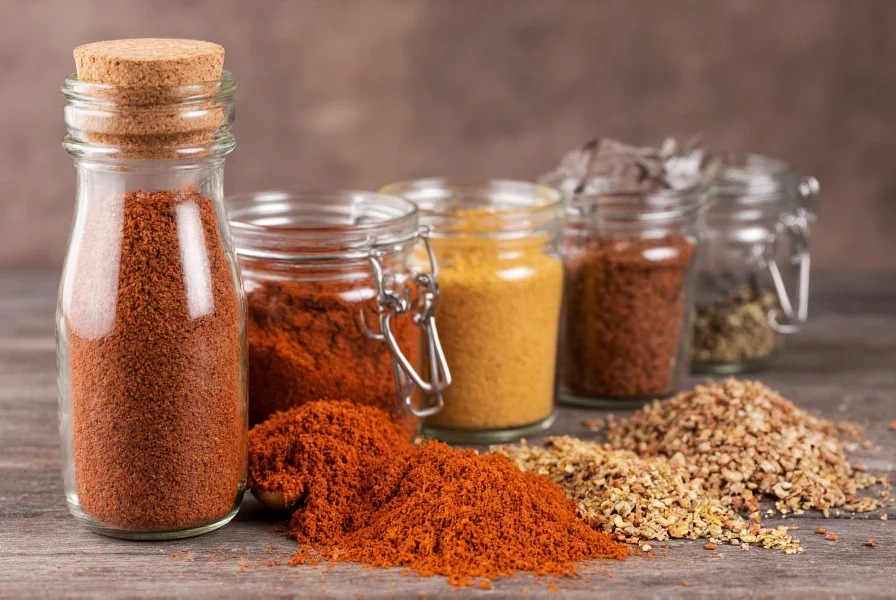Understanding what's inside that small envelope in your pantry can transform your cooking. Chili seasoning packets offer convenience but often come with trade-offs in terms of ingredient quality, sodium content, and customization options. This guide explores everything you need to know about these ubiquitous kitchen staples, from their actual ingredients to creative uses beyond traditional chili recipes.
What's Actually Inside Chili Seasoning Packets?
While specific formulations vary by brand, most commercial chili seasoning packets share a common foundation of dried spices. The standard blend typically includes:
- Chili powder (the base, usually 40-50% of the mix)
- Ground cumin (15-20%)
- Garlic powder (8-12%)
- Onion powder (8-12%)
- Paprika (5-10%)
- Dried oregano (3-5%)
- Salt (15-25% by weight)
- Anti-caking agents like silicon dioxide
When examining chili seasoning packet ingredients, you'll notice significant differences between budget and premium brands. Higher-end varieties often use better quality chili peppers and include additional spices like coriander or cayenne for complexity, while economy brands may contain more salt and fillers.
| Common Ingredient | Percentage Range | Flavor Contribution |
|---|---|---|
| Chili powder | 40-50% | Earthy base with mild heat |
| Ground cumin | 15-20% | Warm, nutty depth |
| Salt | 15-25% | Flavor enhancer |
| Garlic & onion powder | 16-24% combined | Aromatic foundation |
How to Use Chili Seasoning Packets Effectively
Many home cooks simply dump the entire packet into their recipe without considering timing or adjustments. For best results with chili seasoning packets, follow these professional techniques:
Add the seasoning early in the cooking process to allow the spices to bloom in oil or fat, which releases their essential oils and creates a more complex flavor profile. For ground meat dishes, sprinkle half the seasoning into the meat while browning, then add the remainder when combining all ingredients.
Remember that most chili seasoning packet sodium content is quite high, so you may want to reduce additional salt in your recipe. A standard packet contains approximately 300-500mg of sodium, which is 13-22% of the recommended daily limit.

Creating Your Own Homemade Chili Seasoning
When you need a chili seasoning packet substitute or want more control over ingredients, making your own blend offers significant advantages. A basic homemade version that equals one standard packet (about 2 tablespoons) requires:
- 1 tablespoon chili powder
- 1½ teaspoons ground cumin
- 1 teaspoon garlic powder
- 1 teaspoon onion powder
- ½ teaspoon paprika
- ¼ teaspoon dried oregano
- ¼ teaspoon salt (adjust to taste)
- Pinch of black pepper
This homemade chili seasoning recipe lets you adjust heat levels by adding cayenne or chipotle powder, reduce sodium, or enhance specific flavor notes. Store your custom blend in an airtight container for up to six months.
Creative Applications Beyond Traditional Chili
Don't limit yourself to just making chili when using these versatile seasoning mixes. Consider these unexpected applications for your chili seasoning packet uses:
- As a dry rub for roasted vegetables (especially sweet potatoes and cauliflower)
- Mixed into ground meat for flavorful burgers or meatloaf
- Stirred into tomato-based pasta sauces for depth
- Added to cornbread batter for Southwestern flair
- Whisked into mayonnaise or sour cream for dipping sauces
- Seasoning base for homemade baked beans
Nutritional Considerations and Healthier Alternatives
For those monitoring sodium intake, the sodium content in chili seasoning packets can be problematic. Many commercial varieties contain 30-40% of your daily sodium in just one packet. Consider these healthier approaches:
Create a low-sodium version by reducing or eliminating added salt and relying on the natural flavors of quality spices. You can also make larger batches of homemade seasoning without anti-caking agents or preservatives found in commercial packets. When using store-bought packets, look for "no salt added" varieties or dilute regular packets with additional unsalted spices.

Understanding Brand Differences
Not all chili seasoning packets deliver the same quality. Major brands typically fall into three categories:
- Economy brands: Higher salt content, more fillers, less complex flavor profiles
- Mainstream brands: Balanced flavor with moderate sodium, consistent quality
- Premium/artisanal brands: Higher quality chili peppers, more complex spice blends, often lower sodium
When selecting a brand, check for artificial ingredients, sodium content, and whether the chili powder specifies the type of chili peppers used (ancho, guajillo, etc.). The best options list only spices and salt without additives.
Frequently Asked Questions
How many tablespoons are in a standard chili seasoning packet?
Most standard chili seasoning packets contain approximately 2 tablespoons (1 ounce or 28 grams) of seasoning mix, which is designed to flavor 1 pound of meat or 4-6 servings of chili.
Can I use taco seasoning instead of chili seasoning?
Yes, taco seasoning can substitute for chili seasoning in most recipes, though it typically contains more cumin and oregano with less chili powder. You may want to add an extra teaspoon of chili powder to balance the flavor profile when substituting.
How long do chili seasoning packets last?
Unopened chili seasoning packets maintain best quality for 18-24 months when stored in a cool, dry place. Once opened, use within 6 months for optimal flavor. Signs of degradation include faded color, loss of aroma, or clumping (beyond normal anti-caking properties).
Are chili seasoning packets gluten-free?
Most plain chili seasoning packets are naturally gluten-free as they contain only spices and salt. However, always check the label as some brands may process in facilities with gluten or add anti-caking agents that contain gluten. If gluten sensitivity is a concern, making your own blend ensures complete control over ingredients.
What's the difference between chili powder and chili seasoning?
Chili powder is a single ingredient made from ground dried chili peppers, while chili seasoning is a complete spice blend containing chili powder plus other spices like cumin, garlic, and onion powders. One cannot directly substitute for the other without adjusting additional seasonings in your recipe.











 浙公网安备
33010002000092号
浙公网安备
33010002000092号 浙B2-20120091-4
浙B2-20120091-4